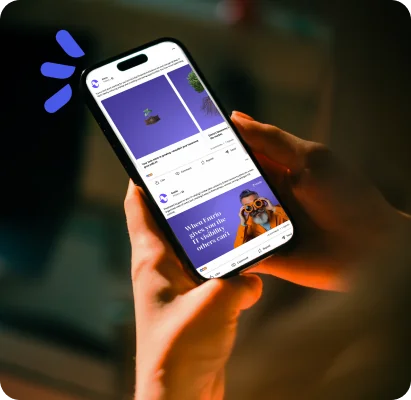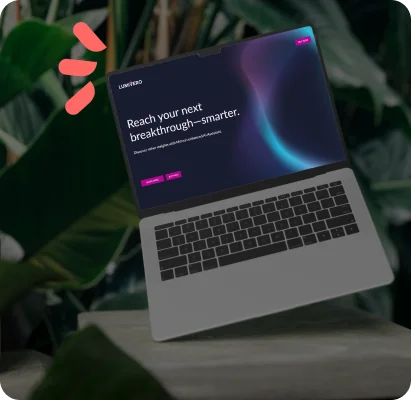
You’ve captured a lead—now what?
The next step is crucial: keeping that lead engaged and moving them closer to a sale. No matter the industry, lead nurturing is key to turning interest into action. One of the most effective ways to do this is through automated workflows. These allow you to educate prospects, build trust, and increase awareness of your brand—all of which boost the odds of conversion.
So, how do you make the most of it? Below are the best practices for building a lead-nurturing strategy that actually works.
What is lead nurturing?
Lead nurturing is the process of engaging leads through a series of automated, targeted messages—usually via email—tailored to where they are in the buying journey. This allows you to build relationships, educate potential buyers, and guide them toward making a purchase.
Why lead nurturing?
- Qualified leads are more likely to convert. By engaging leads with the right content, you increase the chances of turning them into customers.
- Automation streamlines efficiency. Workflows ensure that your team stays in front of prospects consistently without the extra manual effort.
- Build credibility and trust. Sending personalized, valuable content instead of overly promotional messages positions your company as a helpful resource, not just another brand trying to sell something.
10 best practices
1. Know when to enroll your contacts
Before adding a contact to a workflow, make sure you have a valid reason. Did they download a content offer, sign up for a webinar, or request a consultation? Define your enrollment criteria first so that you can craft messages that are relevant and valuable instead of blasting generalized content to all leads.
2. Personalization matters
Adding a prospect’s name to an email is just the beginning. Use your CRM to collect data like demographics, engagement levels, and content preferences to tailor messaging accordingly. You can also use surveys to ask leads what kind of communication they prefer. The more relevant your messages, the better your engagement.
3. Send your messages from a real person
Your sender name matters. In fact, 69% of people are likely to open an email based on who it’s from. Avoid generic sender names like “Sales” or “Marketing”—use a real name to make your message feel human and trustworthy.
4. Follow up with relevant content
If a lead downloads a guide about solving a specific problem, follow up with content that expands on that topic. Add value rather than pushing a product. This helps establish your brand as a knowledgeable resource and keeps your audience engaged.
5. Adapt and be flexible
Every lead moves through the buying process at their own pace. Monitor engagement metrics to see what’s working—and what’s not. If open or click-through rates start to dip, it’s time to adjust. Tweak your messaging, test new formats, and don’t be afraid to switch things up.
Pro tip: Try A/B testing or using your CTA as the header—it’s a smart way to grab attention and guide action.
6. Know when to “break up”
Nurturing is important, but overdoing it can backfire. We’ve found 2–3 emails after a content download works well, but that can vary. Keep an eye on performance and adjust frequency based on how your audience responds.
7. Test cadence and timing
- Cadence: How often should you send emails? Some leads are fine receiving multiple emails in a week, while others may cool off if you wait too long. We recommend starting with an email every three days (espeically when you first start to warm up your sending authority) and adjusting based on engagement.
- Send Times: Many lead-nurturing platforms allow you to customize when emails go out. Test different times and track open rates to see what works best. We’ve seen strong performance when emails go out between 7–8 AM, before most people start their workday. This varies by industry and audience!
8. Identify profitable buyers & analyze the likelihood of purchase
Not all leads are created equal. Segment your audience based on how likely they are to buy. Leads who download multiple resources or revisit your site often should be prioritized. Align your strategy around your ideal customer profile and engagement data to spend time where it matters most.
9. Keep content fresh
Automated doesn’t mean “set it and forget it.” Industry trends shift, buyer needs change, and your messaging should too. Review and refresh your workflows every 6–12 months to stay relevant. Mix in evergreen content for long-term value—but always be ready to pivot when the market does.
10. Measure success & optimize
Track open rates, clicks, and conversions to see what’s working. Use your automation platform’s reporting tools—like an email effectiveness matrix—to fine-tune performance and continuously improve results.
Turn interest into action
Lead nurturing is a powerful way to move prospects closer to becoming customers. With the right strategy—backed by automation, personalization, and relevant content—you can build trust, increase conversions, and drive real results.
Need help turning leads into loyal customers?
Let’s create lead-nurturing workflows that deliver the right message at the right time. Reach out to the Accelity team today.
Subscribe to our newsletter
Curated content, news articles, team updates and more.



